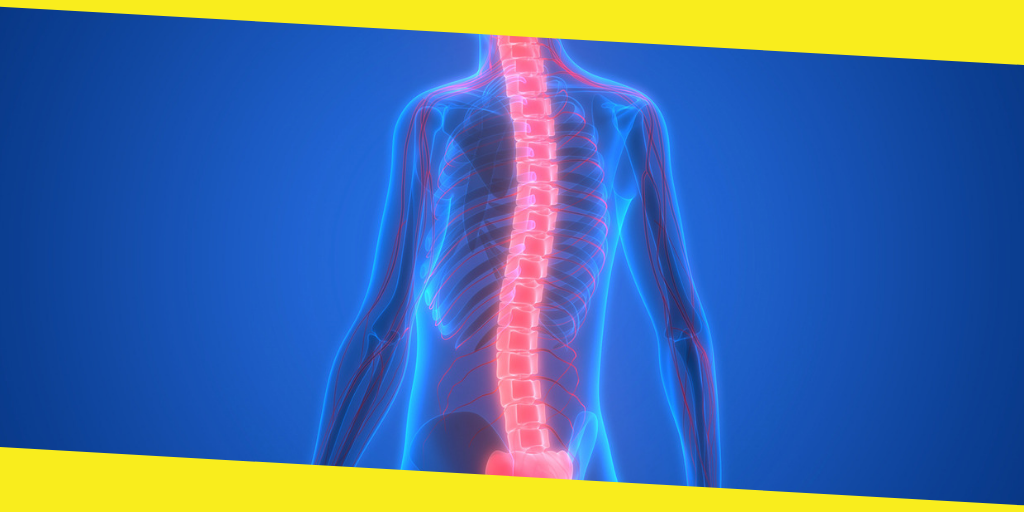Suffering from a Spinal Cord Injury? Here’s How to Reduce the Pain

After a spinal cord injury, pain is the common result. But, the severity of the pain varies from person to person. As with any type of pain, if it gets in the way of daily life, it is important to speak with health care professionals.
Along with working with health care providers, you also might want to have a chat with an attorney, especially if the injury was a result of an accident. If you head to Frekhtman & Associates, you can learn about how an attorney can help you with your spinal cord injury.
Types of Pain
Before you try to reduce your pain, it is important to understand what kind of pain you have from your spinal cord injury. There are a few different types of pain and they are treated in different ways.
1. Musculoskeletal pain
This is pain that originates in the skeletal system along with the connective tissues like ligaments, tendons, and muscles. This type of pain happens near the spinal cord injury, especially above the location of the injury. The pain tends to radiate into the neck, back, shoulders, and arms, and it increases as people age.
There are different types of musculoskeletal pain that happens after a spinal cord injury. Some people suffer from pain in their upper limbs, especially from repetitive use with getting in and out of wheelchairs, beds, and chairs. Back and neck pain is also common, especially if they have had spinal fusion surgery or if they have paralysis from the injury. Muscle spasms are also common for people who have spinal cord injuries.
The best treatments for musculoskeletal pain is through a combination of methods. They usually include medications and therapy.
2. Neuropathic pain
Neuropathic pain is nerve pain. Spinal cord injuries commonly are associated with neuropathic pain. Patients describe the sensations they feel, but most often they say it feels like a tightness or an aching. They also use words like burning, tingling, or squeezing to describe what they feel with neuropathic spinal cord pain.
Unlike musculoskeletal pain, neuropathic pain happens at the site of the injury, in a band around the body at the same level of the injury, or below the injury. In some cases, the entire body below the site of the injury experiences neuropathic pain. Unfortunately, this type of pain is incredibly uncomfortable and difficult for health care providers to treat. Because the pain is chronic, many health care providers implant medication pumps into their patients.
3. Visceral pain
Visceral pain originates in the abdomen. There are several problems that can result from visceral pain and many that can cause it. The location of the spinal cord injury can affect internal organs in the abdomen, so some people have trouble with ulcers, appendicitis, or constipation and those can add to the pain.
Visceral pain is also very difficult to treat. Most health care providers treat it with medication, but sometimes surgery is necessary to remedy the problem that is causing the pain.
Ways that Pain is Treated
There are several ways to treat spinal cord injury pain. They include physical, psychological, and surgical and they can all be combined with medication.
Physical Treatments
Most of these treatments are delivered through health care providers like physical therapists, massage therapists, and acupuncturists.
1. Acupuncture
This treats localized pain through tiny needles that are placed in the skin at key points. This stimulates energy flowing to the point of pain and away from the point.
2. Physical therapy
Physical therapists help with stretching and increasing range of motion. They also help patients regain balance.
3. TENS
Transcutaneous electrical nerve stimulation (TENS) uses electrodes that are placed on key points of the skin to send an adjustable and safe level of electrical current through the body. This helps the body block and manage pain.
4. Therapeutic massage
Muscle pain can be relieved through massage and patients can regain balance. Massage stimulates blood flow which can help reduce pain, too.
Psychological treatments
Psychological treatments are delivered through licensed psychotherapists, psychologists, or psychiatrists.
1. Hypnosis
Hypnosis to manage pain can be done with a therapist or without one. Self-hypnosis training is a realistic way to reduce pain due to spinal cord injuries.
2. Psychotherapy
With psychotherapy, therapists can customize treatment for each patient. They work with individual goals to help patients get through daily life with as little pain as possible. Many people experience anxiety and depression along with pain, so psychotherapy can help treat those issues, too.
3. Relaxation techniques
Relaxation techniques include meditation, biofeedback, and other management techniques that use the mind to overcome the body’s messages of pain.
Medicinal treatments
Some of the medications that help with pain management can be purchased over the counter, but others like antidepressants and narcotics need to be prescribed by a licensed health care provider.
1. Antidepressants
Interestingly, antidepressants can help reduce pain because they affect the reuptake inhibitors that work with selective serotonin. There are side effects, including sleepiness, dizziness, and sometimes nausea.
2. Anti-inflammatories
Many people will treat their musculoskeletal pain with anti-inflammatory medications, specifically with non-steroidal anti-inflammatory drugs (NSAIDS). These include ibuprofen and naproxen. Unfortunately, the side effects involve stomach problems and bleeding problems.
3. Muscle relaxers
Muscle relaxers can help treat pain and spasms. Some health care providers will implant a pump that delivers this type of medication directly to the point of pain. Some patients will take muscle relaxers in pill form. They do have side effects like sleepiness and confusion.
4. Narcotics
Opioids are a controversial topic in the medical community, but they do treat chronic pain. The problem with them is that they are addictive, so if you take narcotics for pain, be sure to communicate frequently with your health care provider.
5. Topical medications
TENS machines aren’t the only topical treatment. Some people benefit from using topical anesthetics on the skin at the point where the pain is the worst. Topical medications like lidocaine are helpful for people who experience pain when touched, too.
You may like this
Recommended For You
Neck Lines: Causes, Prevention & Treatment
Most Inside
Most Inside offers high-quality recommendations and valuable updates to enhance all aspects of your life, providing premium guidance and enriching experiences.




